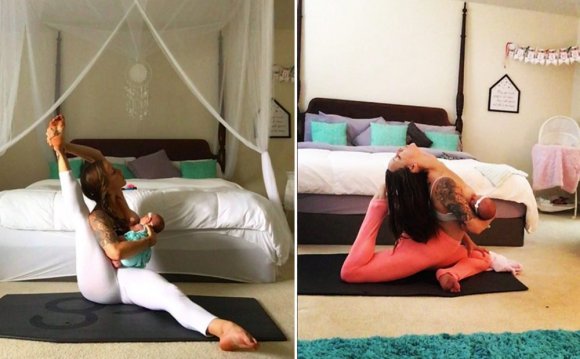
What class would you recommend for beginners?
At FlyDog Yoga, classes are all-levels. If this is your first class or if you are still relatively new to yoga, we suggest letting your teacher know so that they can be sure to provide you with appropriate assists and modifications. The benefits of a yoga practice come from aligning your body with consciousness of the yoga poses. Advanced practitioners move deeper, new students begin to open their bodies but both are in the consciousness of the pose. Having students of all levels in class generates an amazing group energy that promotes the understanding of yoga. The strength, flexibility and balance you gain by dedicating yourself to this sequence of postures will be a solid foundation that can support your yoga practice in whatever direction it leads.
How should I prepare for class?
You should be hydrated with water. Drink several glasses in the hours before class. You should also come to class on an empty stomach. Try not to eat for at least two hours before class. If that is not possible, try to limit your food intake to a light snack and avoid heavy, greasy food. Wear lightweight, non-baggy clothing.
Arrive early to class - leave yourself enough time to register at our check-in counter, setup your mat, and transition from an outside state of mind to an inside state of mind without any rush. Classes begin promptly at the designated time.
What do I need to bring?
You only need your body to practice yoga. At FlyDog Yoga, yoga mats and yoga mat towels are available to rent (free for first class, $2 each after first class) and we have hand towels available for use during class. We have separate male and female locker rooms with bathrooms, showers, water fountains, and lockers for you to secure your valuables. We also have complimentary bath towels available at the front desk.
I am not flexible, can I still practice yoga?
Flexibility is something yoga gives you; you don't have to be flexible to start a yoga practice. Yoga brings flexibility to the body. When you sit a lot during the work day, or when you're engaging in repetitive motion activities, you're shortening your muscles; yoga allows you to lengthen and expand, and release stagnant energy that build up during these activities.
Increased flexibility is not yoga's only objective, nor its only benefit. The ultimate benefit of yoga - to harmoniously unite body, mind and spirit in a healthful physical practice - can be experienced regardless of whether you're able to easily touch your toes.
How often should I practice yoga?
Yoga is a journey. The postures and techniques you learn are designed to guide your body and your mind. By approaching your yoga practice with discipline, consistency and commitment the benefits will become yours naturally.
We would recommend practicing 2 to 4 times per week and with dedication, the long term results will be yours. In the meantime, you will enjoy the ongoing natural yoga highs and peace of mind that comes from a regular practice.
Studio Information
What temperature is the studio?
The studio temperature varies depending on the type of class. For our Vinyasa classes we offer 2 temperature zones: 83-85 degrees for our Heated Vinyasa classes and 88-90 degrees ffor our Power Vinyasa (Heated) classes. The remainder of our classes on the schedule (Aerial, Barre, Yin, etc) do not involve active heat and the room temperature is between 75-80 degrees.
The warm room for our Vinyasa and Power Vinyasa classes serves several purposes. Firstly, it warms the body completely, allowing deeper expression of postures and increased flexibility. This quickly allows new students, who have not yet learned more advanced yogic breathing techniques, to achieve postures in which they achieve 100% of the benefits.
Secondly, the warmth causes sweat. Yoga is about purifying the body and the mind.
Most importantly, the heat tames the mind. Very quickly, the practitioner learns not to fight the heat but to accept it. As this happens, over time you learn to ignore your senses, the endless stream of thoughts they set off and the judgements your mind codes them with. Instead you learn to focus all of your concentration on a single point and find an ability to be present. Once everything else disappears you experience peace and eventually learn how to maintain that peace long after your asana practice ends.
What is the difference between regular classes and workshops?
FlyDog Yoga has 45 regular classes on our weekly schedule. These are classes led by our local, exceptional teaching staff and provide instruction in yoga to help you build a solid, complete practice.









